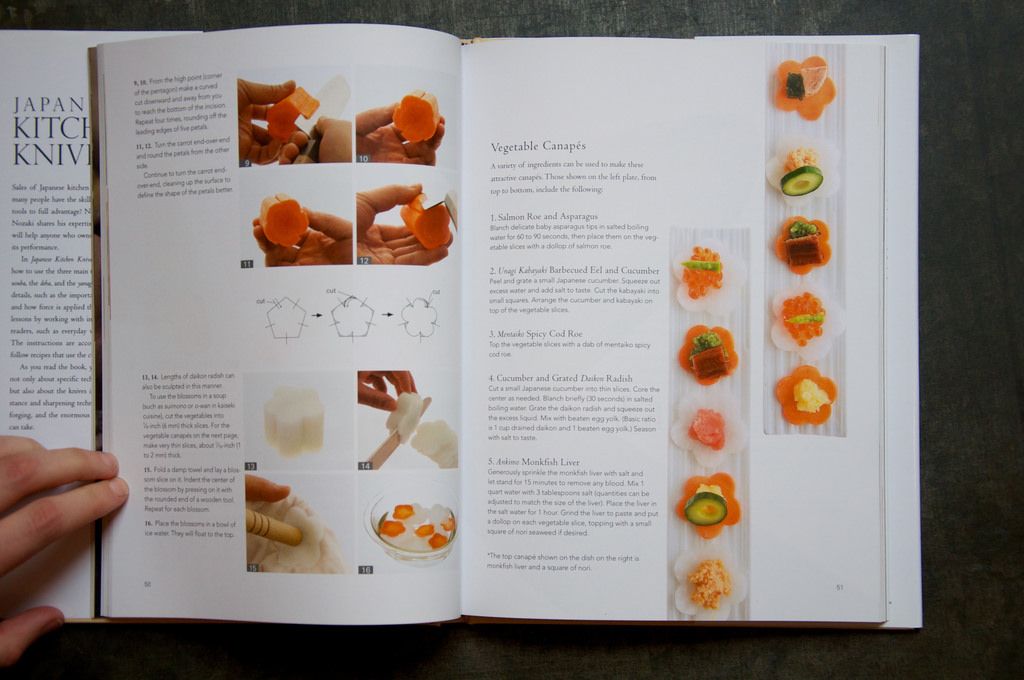We’ve been told not to judge a book by its cover, but what about its photography, layout, typefaces, paper—and how they all interact with each other? Each week, we’ll be sharing a book spread that’s worth taking a close look at for one reason or another. And we’ll ask you: What do you think about it?
Today: When a cookbook depends on images to be usable.

Japanese Kitchen Knives by Hiromitsu Nozaki
Kodansha (2013)
Photography by Yasuo Konishi
Lately, we've been exploring the role of images in books. (I wish we could say we planned it as some sort of investigative series, but it sort of just happened!)
In some cases, cookbooks are better without images, while other times the images are lovely regardless of how unhelpful they may be. But what about the topics that are so difficult, so hard to comprehend that words might merely confuse? Some things are easier to explain with visuals: In addition to learning the states and the parts of the body, cutting carrots into flowers is one of those things. We probably wouldn't know the first step to making such a garnish, but after seeing the photos above, it seems a bit more manageable, don't you think? It's clear the creators of this cookbook realized photography of this technique would be super helpful because the design elements of the above spread shove photos to the forefront:
- More than half of each page is covered by images.
- The all-white backgrounds of the images make the carrots pop—there's nothing fussy leading your attention away from the vegetables.
- The text is directly linked to the photographs. You'll see the images on the left page are numbered to correspond with text; the text on the right page explains each of the canapés in the accompanying image. The text would be bewildering without the photographs and vice versa.
- There are step-by-step diagrams of the geometry of a carrot flower. (Likely the first and last time we'll write that.)
With images that so comprehensively show a technique, it begs the question: Is instructional text even necessary in this case? What do you think?
Thanks Kitchen Arts & Letters for letting us borrow this book!


See what other Food52 readers are saying.